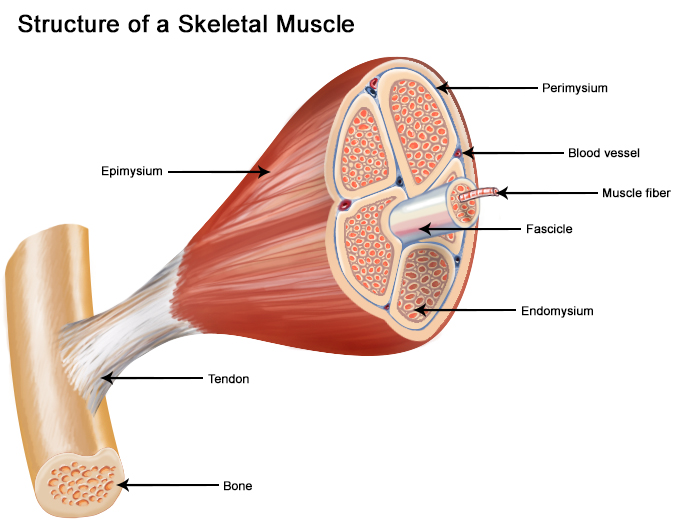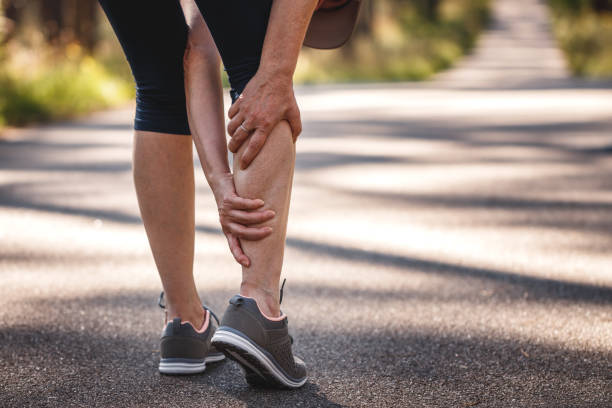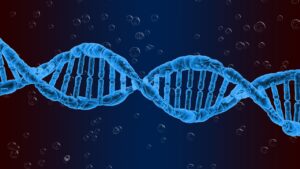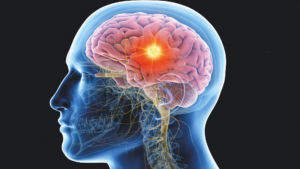As a species of animals, muscles are crucial in making us different from plants. With more and more use of muscles nowadays, our muscles are undergoing changes, discomfort or even soreness. Why do these occur? Let us travel with muscles and find out.
What are some compositions of muscles?
According to Muscles power health in essential ways, muscles are generally divided into three types: cardiac muscles, which make up the walls of the heart and power scheduled contraction and relaxation; smooth muscles, which compose the organs inside the body; and the skeletal muscles, the muscles which take up the most of our body, and in charge of moving and connect the bones.
Among all those, it is likely that we can “feel” our skeletal muscles easily, as it is a massive part of the body with hundreds of pieces.

First, let’s dive into the macro structures of a piece of skeletal muscle. As the picture shows, there are two basic structures in a piece of muscle: muscle itself as well as tendon.
Tendon works to connect your muscles to your bones.
Muscle fibres are the core parts of a piece of muscle, and it is in charge of contradiction and generating forces.
Outside of muscle fibers, from the innermost to the outermost, are endomysium, fascicles, perimysium and epimysium. Those are all connective tissues that facilitate contraction of muscles, and along with tendon, all the connective tissues support the muscles and protect the muscles from injuries.
How do muscles contract?
Unlike cardiac and smooth muscles, skeletal muscles can be controlled manually. This means that whenever we would like to ask our muscles to work for us, we are triggering chemical reactions within the muscles.

As the image shows, there are actin as well as myosin in the muscle fibres. When contracting, there are chemical reactions that trigger myosin to pull actin and thus shorten the distance between H zone.
The muscle then manages to shorten and it has completed a contraction. When we keep working out for a long time, more chemical reactions within the muscles will occur.
Now, why are we having sore muscles during or immediately after working out?
While there are various reasons, scientists believe that some immediate soreness after working out is because of the release of lactic acids.
When the intensity of exercising exceeds the capacity of the aerobic system, anaerobic system will take over it. The body then releases lactic acids as a byproduct. Too much lactic acids released due to massive movements will block the flow of blood in the vessels. This will then cause the pain or the sore in your muscles, according to Housten Methodist.
OK, but why do I have delayed soreness in the next two days?
This delayed-onset muscle soreness (DOMS) is an issue that troubles the people all around the world. While acute soreness I talked above is due to lactic acids accumulation, DOMS is not.
However, DOMS is normal, because it is just a sign of working a little bit hard. The muscles fibres may have microscope damages, and the repair of the damages may cause pain and soreness. This includes the inflammatory responses that cause pain, and fluid follows. The change in muscle tissues also contribute to the soreness.
What are the differences between an injury and soreness?

Soreness, such as DOMS and acute soreness, is normal and will cure in a short period of time. However, muscle injuries, such as muscle strain, is more severe and sudden. There is tear in the muscle when doing intense or sudden exercises, and there is extreme pain right after. You may feel it difficult to move the nearby joints, and there may also occur swelling and bruising.
What can we do to relieve the pain?
There are some ways to treat strained muscles:
- Rest and avoid activities that cause pain.
- Ice to reduce swelling and pain.
- Compression and elevation to help manage swelling.
- Over-the-counter pain relievers if needed.
- Physical therapy or stretching exercises for recovery, depending on severity.

For soreness:
- Gentle stretching and light exercise to improve blood flow.
- Hydration and balanced nutrition.
- Rest and recovery.
- Over-the-counter pain relievers if needed.
- Applying heat or cold to affected muscles can sometimes help.
Still, it is more important to prevent them rather than treating them:
For healthy working out,
- Staying hydrated
- Stretching and warming up
- Having enough sleep before working out
- Using a foam roller
- Cooling down after working out.
Working out is essential, and it is unavoidable to experience discomfort as human beings. Our muscles are operating mechanisms to prevent our bodies from severe injuries, but we still need to know what we can do to “help” our muscles.
It is certain that we learn from personal experience. Do you want to share how you treat yourself after working out? Please comment below and we will discuss!




